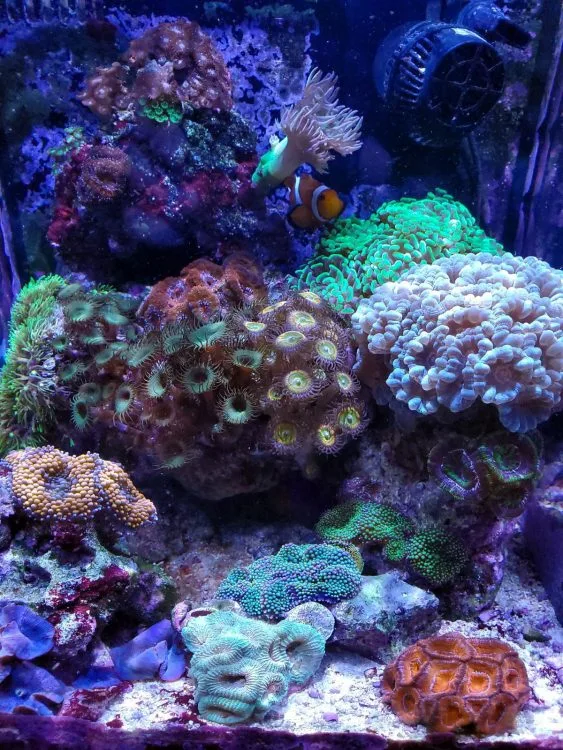Stunning 10-Gallon Reef Tank – dferrari13's TOTM | NanoReef

Tank Specifications
Volume: 10 Gallons / 37 Liters
Dimensions (L × W × H):
12.0" ×
15.0" ×
13.0"
30.5cm ×
38.1cm ×
33.0cm
Equipment List
- Salt: Natural sea water
Frequently Asked Questions
How do I choose the right equipment for a small reef tank?
For a small reef tank, such as a nano reef, it's crucial to select equipment that fits your tank's size and needs. Start with an all-in-one tank like the Innovative Marine NUVO Fusion which combines display and filtration. Choose a reliable light like the Kessil A160we for optimal coral growth, and consider a small, efficient heater and return pump, like the Finnex 50watt titanium heater and Tunze Silence return pump. Use high-quality filtration media, such as Chemi-Pure Blue and Phosguard, to maintain water quality.
What substrate should I use in my reef tank?
For a nano reef, using a combination of live sand and dry rock is recommended. Live sand provides beneficial bacteria that help with biological filtration, while dry rock minimizes the risk of introducing pests. Aim for about 1 lb of sand for every gallon of water, creating a stable base for your hardscape.
How do I maintain water quality in my reef tank?
Maintaining water quality involves regular water changes, using high-quality saltwater, and monitoring key parameters such as salinity, pH, ammonia, nitrites, and nitrates. A maintenance routine like performing a 30% water change weekly can help, along with the use of filter media in your filtration system.
What is the best maintenance routine for a reef tank?
A simple maintenance routine involves weekly water changes of 20-30%, vacuuming detritus off rocks and corals using a turkey baster, and monitoring water parameters regularly. Utilize a protein skimmer to help maintain water quality, and consider automated top-off systems to maintain consistent salinity.
How can I prevent detritus buildup in my tank?
Prevent detritus buildup by utilizing appropriate water movement, such as using powerheads and return pumps, to keep detritus suspended in the water column. Regular maintenance with a turkey baster to blast rocks and sand, along with frequent water changes, will help keep detritus levels low.
How often should I feed my fish and corals?
Fish can typically be fed once or twice daily with high-quality pellets, while occasionally supplementing with frozen foods like mysis shrimp. Corals generally do not require daily feeding, as they photosynthesize using symbiotic zooxanthellae. However, periodically feeding them with products like Reef Roids or a coral food mix can help improve their overall health.
What type of coral feeding products should I use?
For most soft and LPS corals, products like Reef Roids or Reef Energy AB+ provide essential nutrients and supplements. It’s advisable to observe how your corals respond to different foods and adjust accordingly, but feeding should not be excessive to avoid water quality issues.
What should I do if my corals are dying unexpectedly?
If corals are dying unexpectedly, begin by testing your water parameters including pH, salinity, nitrates, and phosphates. Common issues may stem from poor water quality, lighting issues, or toxins from other corals. Investigate potential sources of toxicity such as palytoxins, particularly if you have leathers or LPS corals in the tank.
How can I manage a dinoflagellate bloom in my reef tank?
To manage dinoflagellates, increase water movement, reduce nutrient levels through water changes, and consider using products like Dr. Tims Waste Away. Manual removal and enhancing filtration can help, along with ensuring stable water parameters.